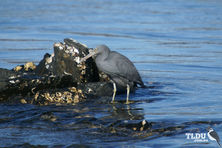
Shoppers Feedback:
Jan 17, 2017
Hello Ros,
I have now paid the invoice, but I would like to write to you just to say a big THANK YOU for getting me the Penguin!
The ChatterMate Penguin became a nice memory for me when I was in New Zealand, and I am so greatful to you for arranging so that I could have it! :-)
Thank you so much!!!!!!!!!!!
Regards,
Malin
Hi Ros,
Many thanks for your very kind email. I really appreciate your prompt reply!
I appreciate your advice regarding the decorations and customs. These are a gift for my daughter’s exchange student family so when she returns home on the weekend I will show her and see if she loves them as much as I do!
Thanks so very much again - I am truly grateful for your kind assistance.
Kind Regards
Bernadette
Ros,
Thanks again for the great customer service. It's a refreshing change!
Best regards,
Trevor
Hey Roz,
Thank you for your emails. Just loved my first order. The cute little Aussie bush critters are going to be used for an office Christmas decoration. My colleagues also liked them and talked about making an order to your site. I'll send you a photo when completed.
I'll be ordering more to send to my daughter's host family in America.
Fabulous service from you.
Kind regards,
Michelle
Thankyou. Order arrived today. One very happy grandson with his new beastly binoculars.
Regards,
Irene
- Home
- Wild Wonders
- Shop
- Aromas of Australia
- Australian Made
- Books
- Book Marks
- Christmas Decoration Sale
- Christmas Decorations
- Clocks
- Drink Holders
- Garden & Outdoor
- Gift Wrapping & Cards
- Home & Giftware
- Jewellery
- Keyrings
- New Products
- Pencils & Pen Holders
- Photo Frames
- Plush Toys
- Plush with Sound
- Sheepskin Rugs
- Stationery
- Stone Carvings
- Toys & Games
- Travel Goods
- Wedding
- Wild Figurines
- Wildlife Safety Products
- Wind Chimes
- Wine Charms
- View All Products
- Wildlife
- Australiana
- Explore
- Contact Us

Quick Facts
| Length: | - |
| Height: | 65 cm |
| Weight: | 400 grams |
| Colour: | - |
| Habitat: | Beaches, rocky shores, tidal rivers, inlets, mangroves and exposed coral reefs |
| Food: | Small fish, crustaceans and insects |
| Predators: | - |
| Status: | Secure in all states and territories in Australia |
There are two colour forms of the Eastern Reef Egret. The white form has a white body and wings, a yellow and grey bill, a bare face that is green-yellow, and dull yellow-grey legs. The dark form has a slate-grey body and wings, with a small white streak on the throat, the bill is slate-brown, and the legs are grey. The eyes of both forms are yellow. The Eatern Reef Egret is also called the Eastern Reef Heron, and the dark form the Blue Heron or Blue Reef Heron.
The White-faced Heron is also grey, like the dark form of the Eastern Reef Egret, but is a lighter tone of grey, has a white face, a more extensive white throat, and clearer yellow legs. All other egrets are similar to the white form in body colour, but have more slender bodies, finer bills and longer legs.
The Eastern Reef Egret is found on the coast and islands of most of Australia, but is more common on the Queensland coast and Great Barrier Reef than elsewhere. It is now rare on Victorian and Tasmanian coasts. The dark form predominates in temperate areas, the white form in the tropics.
The Eastern Reef Egret lives on beaches, rocky shores, tidal rivers and inlets, mangroves, and exposed coral reefs.
Eastern Reef Egrets are largely sedentary.
Eastern Reef Egrets hunt by both day and night for small fish, crustaceans and insects. They also invade colonies of nesting terns and steal fish brought in to feed to the young. It is often recognised by its feeding behaviour: it feeds in clear water and hunts its prey by stealth, by crouching low as it moves through shallow water or over rocks and coral.
The Eastern Reef Egret breeds throughout the year. The nests can be in trees in island woodlands, or on the ground under shrubs or rock ledges. The stick nest platform is lined with seaweed. Nesting occurs in single pairs or in small colonies. Both sexes incubate the eggs and the young remain in the nest for up to 6 weeks.
Last Updated: Wednesday 8th January, 2014
BUSH e-TELEGRAPH
Signup for our monthly newsletter the "e-Telegraph"
Quick Links
Home | The Beginning | About The Land Down Under | Wild Wonders | Advertise on Wild Wonders | Christmas Decoration Sale | Christmas Tree Decorations | Drink Holders | Plush with Sound | Stone Carvings | Wildlife Wine Charms | Freebies | Australian Wildlife | Help Our Wildlife | Australiana | Photo of the Month | Explore The Land Down Under | Contact Us | Legal Notices

